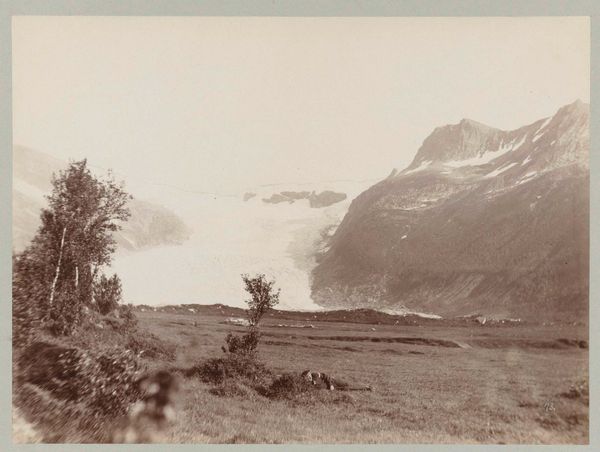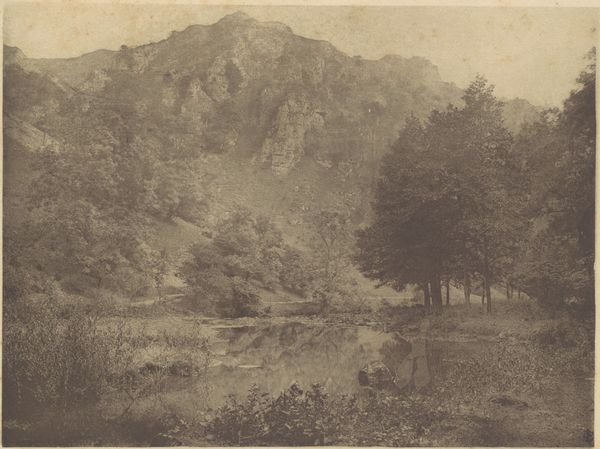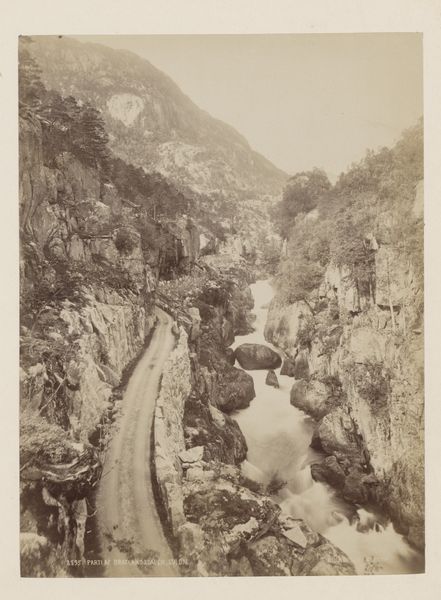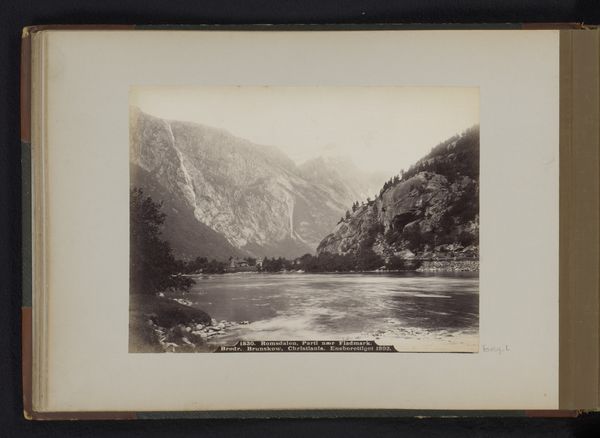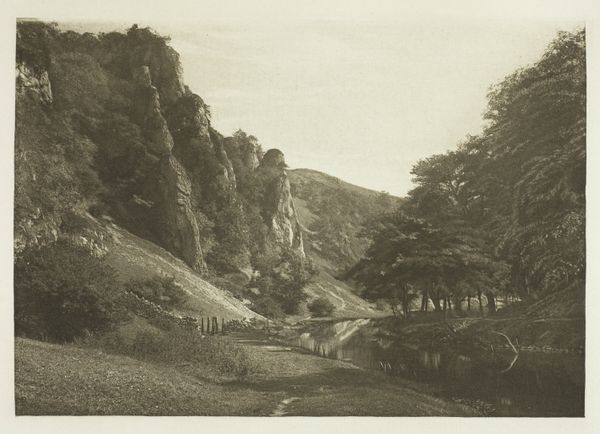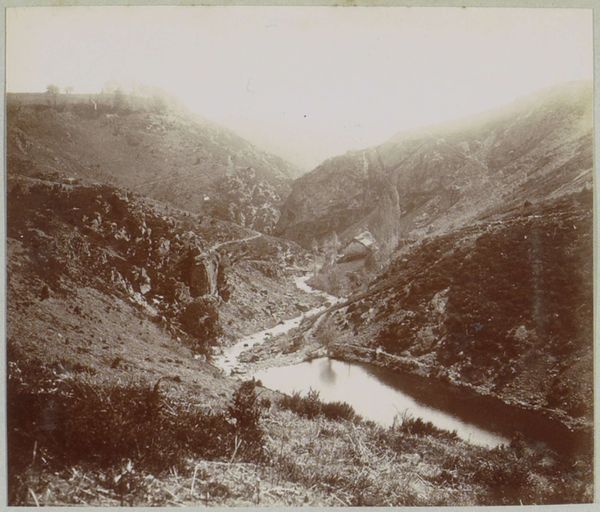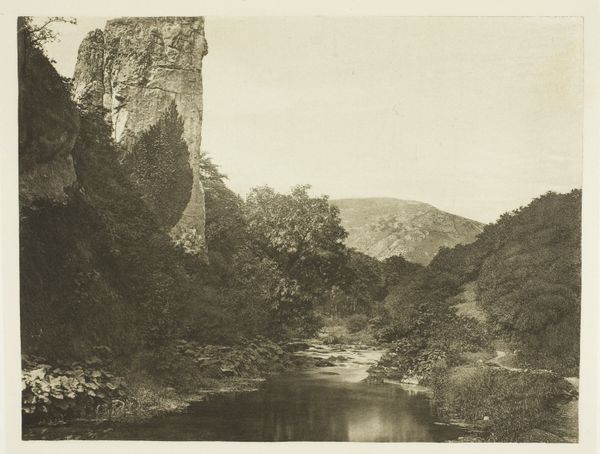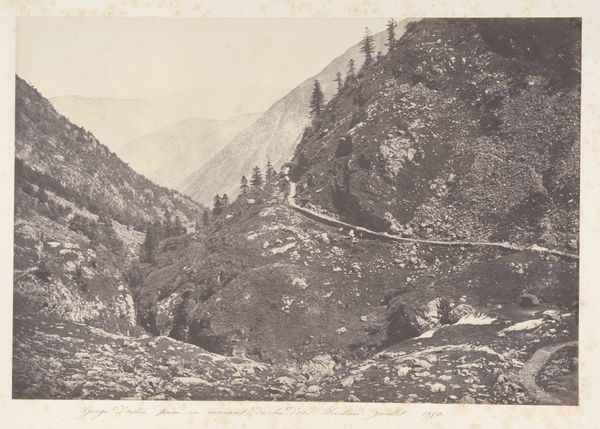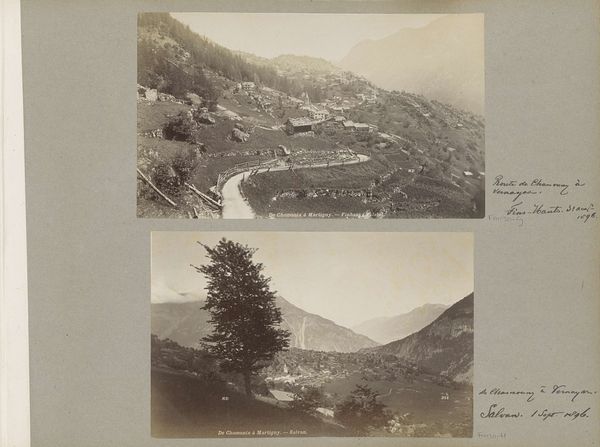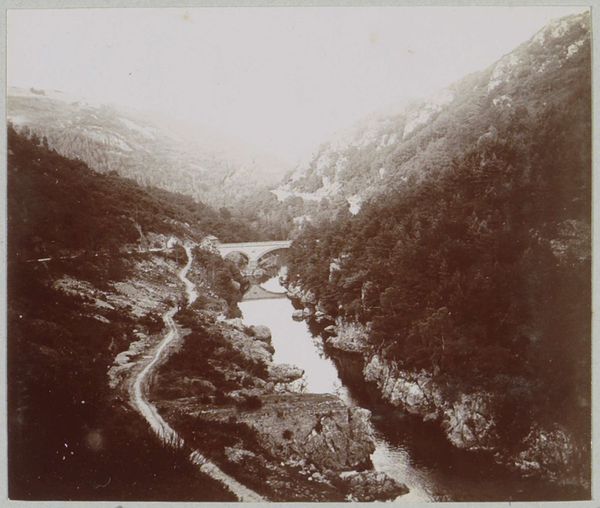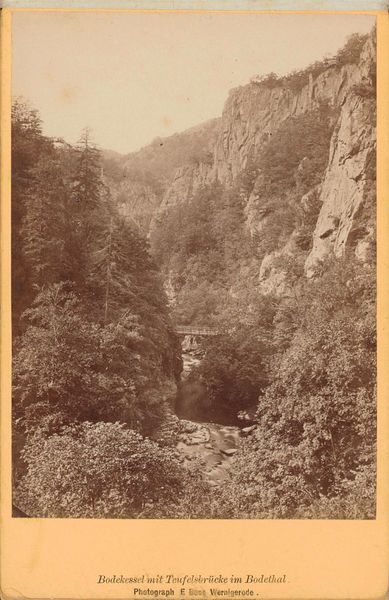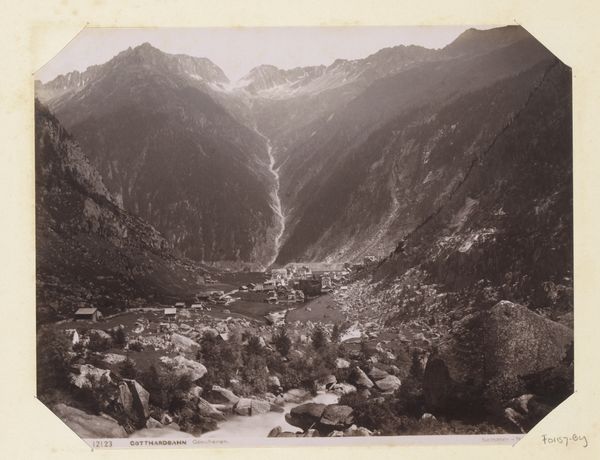
photography
#
pictorialism
#
landscape
#
photography
Dimensions: 14.1 × 20 cm (image); 16.4 × 22.1 cm (paper); 24.4 × 32 cm (album page)
Copyright: Public Domain
Curator: Here we have Peter Henry Emerson's photographic print, “Entrance to Dove Dale, Derbyshire,” dating to the 1880s, and residing here at the Art Institute of Chicago. Editor: It's almost dreamlike. The tones create such a sense of depth, and the composition, particularly how the light catches the falls in the foreground, draws you right in. Curator: Emerson was a key figure in pictorialism, aiming to elevate photography to the level of fine art. Landscape, particularly the English countryside, provided a perfect stage for expressing emotional and aesthetic ideals. Editor: The choice of grayscale really enhances the image's structural elegance, almost reducing the landscape to its purest geometric forms. The triangle of the rock formation opposes the more organic shape of the treeline. Curator: Absolutely. The human longing for a harmonious connection with nature courses through this work, echoing a pre-industrial vision of Britain, steeped in mythology and Romantic poetry. Dove Dale itself had become something of a cultural symbol of untouched natural beauty by the late 19th century. Editor: I am fascinated by the contrasting textures throughout: the solid, almost aggressive rocks contrasted with the subtle shimmer of the water and delicate, detailed foliage. It brings a tension that elevates it above simple representation. Curator: And consider the compositional layers: the immediate foreground with the textured bank, the water feature cutting across horizontally, followed by that shadowed midground with the barely visible road – these layers reinforce a cultural narrative. It tells the story of the picturesque ideal slowly fading with modernity. Editor: Ultimately, I think it succeeds due to its nuanced tonal balance, generating a landscape that seems as much a feeling as a place. Curator: I agree. It transcends mere documentation; it becomes a resonant meditation on the complex relationship between humanity, memory, and place.
Comments
No comments
Be the first to comment and join the conversation on the ultimate creative platform.

